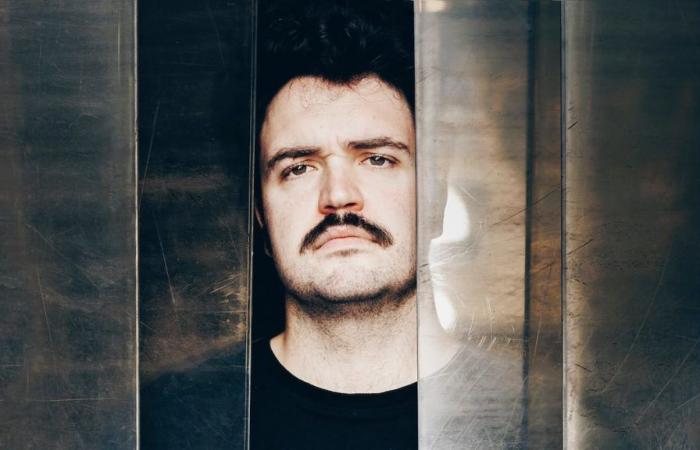
“Hey, well, we’re going to set up a design festival in Madrid.”
This story is told in four scenes. In one, two kids, designers, so early in their careers that they don’t even know if they will have a place in the world of adults, return to Madrid from New York. Thanks to a series of caroms, one of them has curated an exhibition there, his first, with more faith than experience, showing the work of eight Spanish designers at Mast Books, a second-hand bookstore and ground zero of Manhattan taste. “That had been a I stew it, I eat it. We are going to find the financing, we are going to contact the designers, we are going to produce. We are going to transport the pieces on the plane… A Christ,” recalls Miguel Leiro (Santiago de Compostela, 30 years old), with such dry irony that it reveals his Galician roots. “But we went out in Wallpaper, Pin Up, a lot of international magazines. People asked me: ‘What’s happening in Spain with design? “How cool this project.” It was 2019 and the experience precipitated Víctor Clemente, his friend and partner, to verbalize the inevitable:
“Hey, well, we’re going to set up a design festival in Madrid.”
In Madrid, in Spain, design is a fertile and closed world. It is full of young talents with ideas and spaces to present them and it is very rare for these two worlds to coincide. The Mayrit biennial, which Leiro launched in 2020 and which has just closed its third edition, tries to remedy that: bring here the young, the risky, the inexperienced, the reckless who will later be identified by multinationals and cheered on by the international press, to this fruitful B-side of institutional exhibitions such as the Madrid Design Festival. “The Madrid Design Festival does it [la empresa de gestión cultural] The Factory: a lot of resources, wow, the bomb,” Leiro clarifies. “But we, young people with references like Forma Fantasma and other people, were not interested in seeing Patricia Urquiola’s furniture again, or a Jaime Hayllón retrospective. “We want new proposals, new productions.”
The bottleneck that prevents the flow of young talent is not as accidental as it should be: “Madrid Design Festival does not invite a new designer to do a new exhibition. They tell him: ‘It’s 500 euros to exhibit.’ And I don’t have 500 euros. They tell me, Tornasol Studio and Teresa Fernández-Pello… That’s when I said: ‘Here there is an opportunity and a need.’ Mayrit has served as a platform for great teams that are a little more established today: Casa Antillón ended up working on Primavera Sound last year. Supper Club Fund, for Loewe. There was talent, someone with an eye was needed.
Leiro had an eye, that’s the second scene. He grew up in New York because his father, Francisco Leiro, “a sculptor who did very well,” had received a Fulbright scholarship in 1988. “A year after Juan Uslé received the scholarship [artista cántabro famosamente afincado en la ciudad]: my father went with Txomin Badiola, Peio Irazu…”. These references of Spanish design in the eighties were common presences in Leiro’s childhood. “I grew up in a privileged environment,” he adds, the first of many times he will use that word to talk about himself. In winter, he went to public school PS234 in Tribeca. In summer, he went to Galicia, to his father’s village, Cambados, in Pontevedra. “Let’s see Shin Chan in Galician for three months.”
Third scene. Madrid. Leiro is 16 years old, studying high school at a bilingual school and trying to adapt to the country. “It cost me a lot, I arrived very Americanized,” he admits. He had the shelters of him. “I was dedicated to following the NBA, wearing Air Jordan and listening to Snoop Dogg and 50 Cent.” And he had the design, more than a refuge, almost a religion. “I was a total geek, I spent all night looking for Jasper Morrison’s new project, seeing what was new at the Milan fair. An obsessed kid, watching all the design magazines, reading all the articles…” In one class, he presented a paper on the life of the Eames, the famous creative couple of the 1950s and 1960s. “My teacher gave me an A, because he didn’t know how to give me a grade,” he remembers. “’Who the hell are these people? Bloody Miguel made a bloody essay about chairs!”
Final scene. The Academy of Spain in Rome. Leiro is 24 years old. With a degree in Industrial Design, he has managed to open his own path, with his own contacts, with his own advice and there he is, preparing a design project among people of 50 or 60 years old. “When they accepted me, I got stressed and said: ‘Don’t mess up, you have to be locked up in the library all day, reading, working, don’t do anything…’. A boy trying to be older, looking for his place in the adult world, with an eye and capacity to respond to big ideas and not just big institutions.
There he met Marta Rincón, art historian, expert in promoting Spanish talent and one of the most beloved people in art in this country. She saw these qualities and pushed him to take advantage of them. “We were talking in my studio and she told me: ‘You grew up in New York and there is a great design week, aren’t you interested in how to bring designers to New York?’ He admitted: “Well, I had never thought about it.”
She said, “Hey, well, we’re going to put on an exhibition in New York.”





